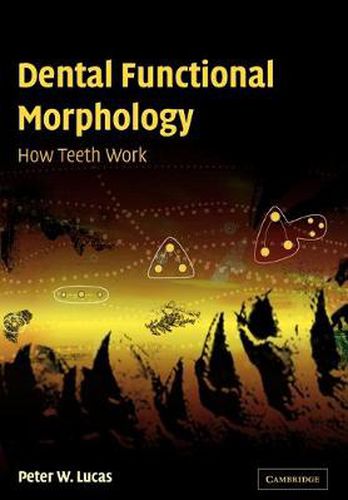Readings Newsletter
Become a Readings Member to make your shopping experience even easier.
Sign in or sign up for free!
You’re not far away from qualifying for FREE standard shipping within Australia
You’ve qualified for FREE standard shipping within Australia
The cart is loading…






Dental Functional Morphology offers an alternative to the received wisdom that teeth merely crush, cut, shear or grind food and shows how teeth adapt to diet. Providing an analysis of tooth action based on an understanding of how food particles break, it shows how tooth form from the earliest mammals to modern-day humans can be understood using very basic considerations about fracture. It outlines the theoretical basis step by step, explaining the factors governing tooth shape and size and provides an allometric analysis that will revolutionize attitudes to the evolution of the human face and the impact of cooked foods on our dentition. In addition, the basis of the mechanics behind the fracture of different types of food, and methods of measurement are given in an easy-to-use appendix. It will be an important sourcebook for physical anthropologists, dental and food scientists, palaeontologists and those interested in feeding ecology.
$9.00 standard shipping within Australia
FREE standard shipping within Australia for orders over $100.00
Express & International shipping calculated at checkout
Dental Functional Morphology offers an alternative to the received wisdom that teeth merely crush, cut, shear or grind food and shows how teeth adapt to diet. Providing an analysis of tooth action based on an understanding of how food particles break, it shows how tooth form from the earliest mammals to modern-day humans can be understood using very basic considerations about fracture. It outlines the theoretical basis step by step, explaining the factors governing tooth shape and size and provides an allometric analysis that will revolutionize attitudes to the evolution of the human face and the impact of cooked foods on our dentition. In addition, the basis of the mechanics behind the fracture of different types of food, and methods of measurement are given in an easy-to-use appendix. It will be an important sourcebook for physical anthropologists, dental and food scientists, palaeontologists and those interested in feeding ecology.